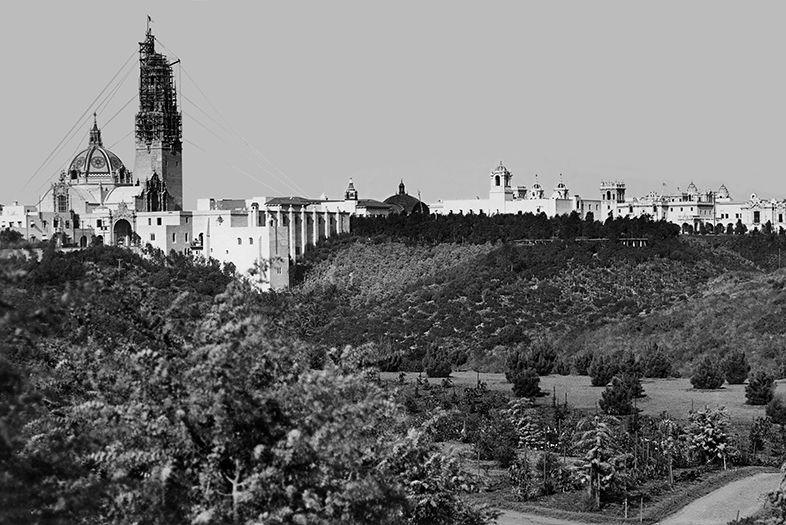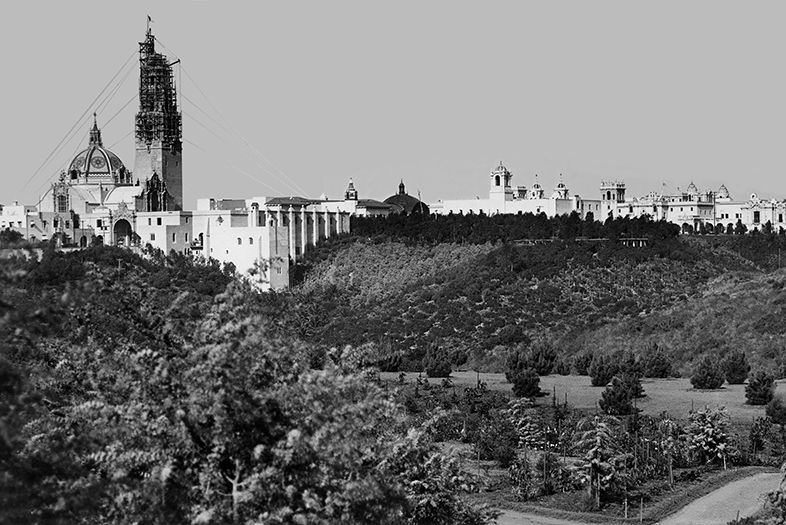By the Numbers
$3M – Amount needed in order to reopen the California Tower to the public in 2015
1911 – California State Legislature authorized the use of the park for an exposition, as well as ratified the decision to name it Balboa Park
25 cents – Admission paid by anyone who wanted to watch the construction
1 million – Number of plants John Morley was hired to put into the ground of the canyons (another 50,000 were on the Exposition grounds)
$1,937,445 – Amount spent erecting the buildings for the Exposition
42,486 – Spectators at the December 31, 1914 concert, opening ceremonies, and fireworks (about equivalent to the then-population of San Diego)
San Diego’s City Park was founded in 1868. But as late as 1909, only about 100 of the 1,400 acres had been landscaped. That year, the president of the San Diego Chamber of Commerce, G. Aubrey Davidson, had the idea of using the park to host a celebration for the opening of the Panama Canal, which was slated for January 1, 1915. San Diego would be the first U.S. port north of the canal, and city leaders wanted to take advantage of their geographic position to boost the economy and help develop the park.
New York architect Bertram Goodhue chose a Spanish Colonial Revival style for the 1915 Panama–California Exposition. Officials liked that it would distinguish SD’s event from the San Francisco Panama–Pacific Exposition, which would have a “Beaux Arts” look.
Park commissioners gave it the name “Balboa Park” after Vasco Núñez de Balboa, a European explorer who first saw the Pacific in 1513. As the Panama Canal would connect the Atlantic to the Pacific, the moniker was a good association for the park and the planned fair.
The 2015 Centennial, which kicks off this month, refers not to the 100th anniversary of the park, but rather the recognition of an entire century since the Exposition, and of enjoying the park’s architecture as we know it today.

Vintage San Diego: Building Balboa Park


















